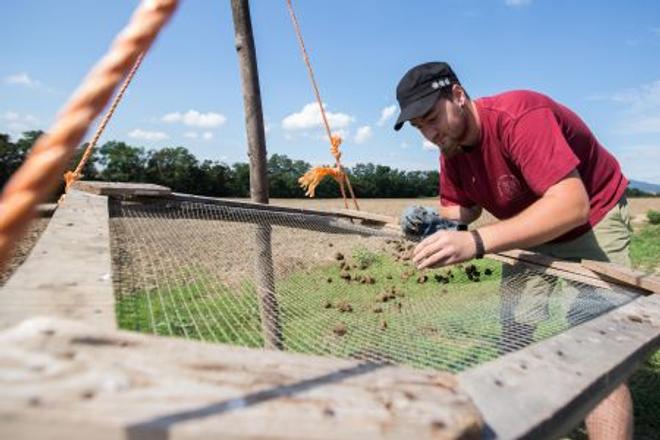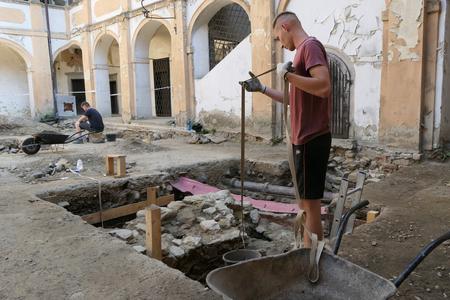Most gallows were built from wood, but there was an exception in the town of Holíč, western Slovakia.
Recently, the first known archaeological survey of a brick gallows in Slovakia took place in Holíč.
So far, the research has revealed the stone foundations of the gallows, says archaeologist Daniel Bešina of the Department of Archeology of the Faculty of Philosophy at the Constantine the Philosopher University in Nitra.
Five bodies found
"We are in the second phase of the research, which we started in May. We focused on how the gallows was built. Most were wooden, but the one in Holíč had two foundational bricked pillars, and columns that were probably built with brick and stone. There was a wooden beam on top, on which they hanged people," explained Bešina.
Skeletal remains of five humans have so far been found in the vicinity of the gallows.
"Some bodies were found in an anatomical position, but we have bodies the bones of which were scattered. This shows that the bodies were often left on the gallows until the next execution," the archaeologist said.
Used in various eras
The site where the gallows was located also provided a lot of evidence of combat activity during World War II. On April 11, 1945 frontline battles took place here. In addition to a large amount of shrapnel shells, several pieces of unexploded ammunition and a dump of artillery ammunition were discovered.
"The results pleasantly surprised us. In addition to the discovery of the brick foundations of the gallows, the remains of five individuals, probably convicts, were also found, which is an unusually large number," said Peter Grznár, a preservationist from the Regional Monument Office in Trnava.
"The finds of prehistoric ceramics as well as artillery ammunition prove that the gallows mound was used in various historical eras. Based on the preliminary results of the archaeological research we are considering the preservation of this important historical site."




